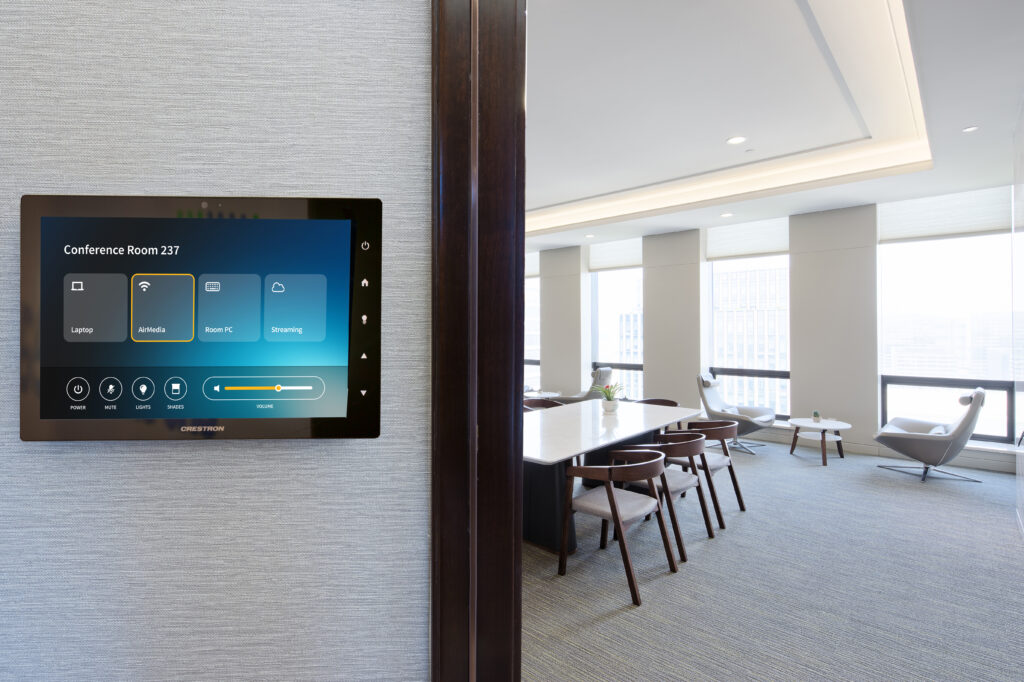Sustainability in AV: Greener Solutions for Modern Organisations
As organisations across the globe embrace more sustainable business practices, the Audio Visual (AV) industry is stepping up to play its part. From reducing energy consumption to minimising electronic waste, AV technology is evolving to meet the needs of modern organisations that are prioritising environmental responsibility alongside performance and innovation.
At TenFour, we believe that delivering great technology solutions and supporting sustainability can – and should – go hand in hand.
The Environmental Impact of AV
AV systems are an essential part of today’s business operations – from digital signage and meeting room technology to video conferencing and control systems. But traditionally, AV setups have not been known for their environmental friendliness. High energy usage, short product lifecycles, and the complexity of recycling old equipment all contribute to the industry’s carbon footprint.
With climate change and sustainability top of mind for many businesses, the AV sector is undergoing a much-needed shift. Organisations are now looking for solutions that align with their environmental goals, without compromising on functionality or user experience.

What Does Sustainable AV Look Like?
Sustainable AV is not just about choosing energy-efficient devices. It’s a holistic approach that considers the full lifecycle of AV technology – from manufacturing and installation to usage and end-of-life recycling.
Here are some key ways sustainable AV is becoming a reality:
1. Energy Efficiency
Modern AV solutions are increasingly designed with power-saving features such as automatic standby modes, smart sensors, and energy-efficient displays. LED technology, for example, consumes significantly less power than older display technologies and lasts longer, reducing the need for frequent replacements.
2. Remote Management and Automation
With cloud-based platforms and remote monitoring, AV systems can now be managed offsite – reducing the need for physical maintenance visits and unnecessary travel. Smart automation can also optimise energy use by powering down systems when not in use or adjusting lighting and display brightness based on environmental conditions.
3. Longer Product Lifespans and Upgradability
Choosing modular and upgradeable AV systems reduces the need for complete hardware replacements. By upgrading components rather than entire systems, organisations can extend the lifespan of their AV investments and reduce waste.
4. E-Waste Reduction and Recycling
Proper end-of-life recycling is critical. Forward-thinking AV providers partner with certified e-waste recycling services to ensure old equipment is disposed of responsibly. Some vendors even offer take-back programs to help customers recycle outdated hardware.
5. Sustainable Materials and Packaging
Manufacturers are increasingly using recycled or responsibly sourced materials in their products and packaging. Less plastic, reduced packaging size, and the use of recyclable materials all contribute to a smaller environmental footprint.

Smarter Collaboration, Lower Carbon Footprint
One of the most impactful ways AV technology supports sustainability is by reducing the need for corporate travel. With high-quality video conferencing, virtual collaboration platforms, and integrated meeting room systems, teams can connect globally—without leaving the office.
This shift to remote collaboration means fewer business flights, which directly reduces CO₂ emissions. Even replacing a handful of in-person meetings with virtual ones can eliminate tonnes of carbon output each year. It’s a win for the environment and for the bottom line.
Beyond environmental benefits, virtual meetings also improve executive efficiency. Time once spent commuting or flying can now be redirected to high-value activities, improving productivity across the board.
In addition, AV automation helps reduce energy consumption at the source. Systems can be configured to power down automatically when not in use, eliminating unnecessary energy waste. Adaptive power management ensures AV components—such as displays, amplifiers, and control systems—only operate when required.
These technologies demonstrate that sustainability doesn’t have to come at the cost of performance. In fact, greener AV solutions often lead to smarter, more efficient operations overall.

How TenFour Supports Sustainable AV
At TenFour, sustainability is a key consideration in the way we design, deliver, and support AV solutions. We’re committed to helping our clients meet their environmental targets while enhancing the performance and efficiency of their AV systems.
- We partner with trusted brands that prioritise sustainable manufacturing and energy efficiency.
- Our designs favour long-term value, choosing scalable and upgradeable systems wherever possible.
- Remote monitoring and support help reduce unnecessary travel, lowering emissions.
- We offer responsible disposal and recycling of legacy AV equipment through certified partners.
Moving Forward: AV as a Catalyst for Sustainability
AV technology has the potential to be a driver of sustainability, not just a consumer of resources. By integrating greener solutions into their AV strategy, organisations can contribute to broader environmental goals, reduce operating costs, and demonstrate their commitment to responsible business practices.
Whether you’re designing a new workspace, upgrading a meeting room, or rolling out digital signage across multiple locations, it’s worth asking: how can this be done more sustainably?
At TenFour, we’re here to help answer that question.

